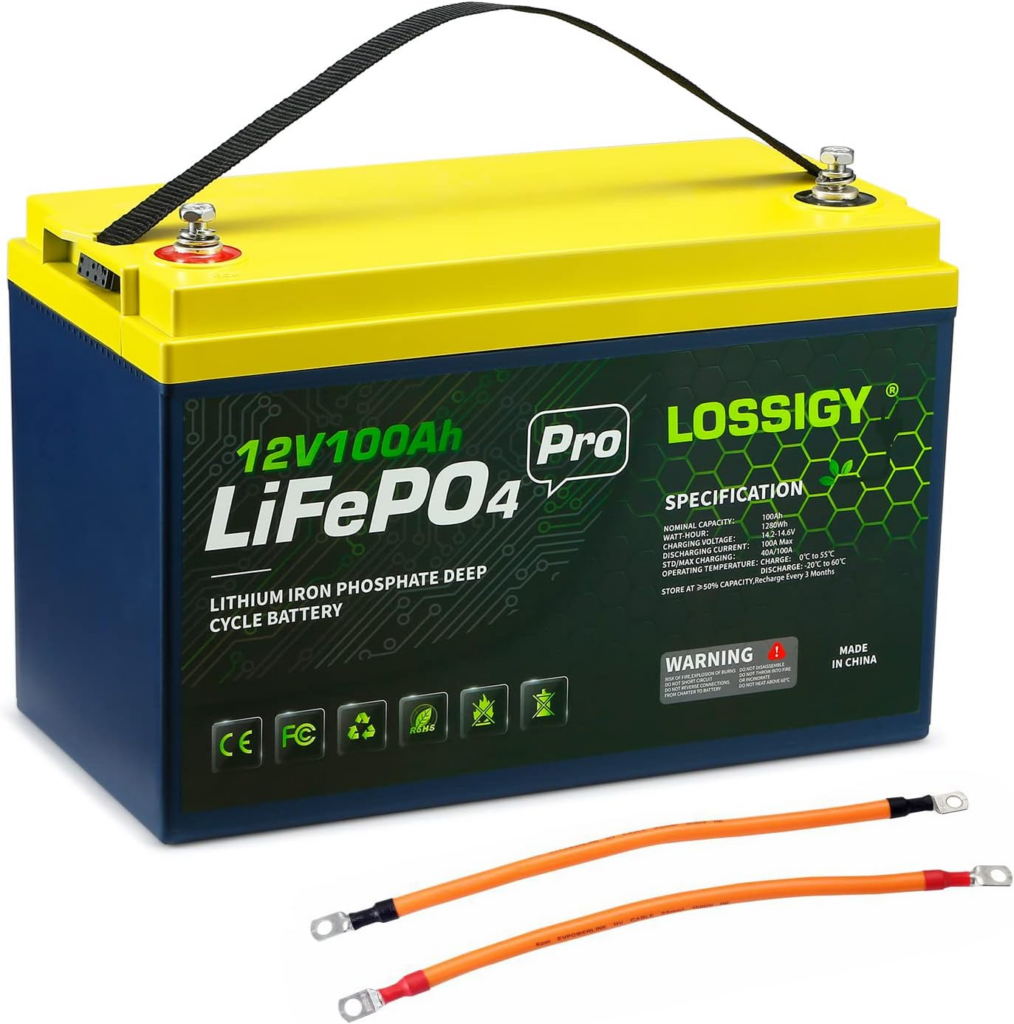Since so many diverse systems and devices, such as cellphones, computers, electric automobiles, and renewable energy storage, are powered by batteries today, they are tremendously significant. The Ampere-hour (Ah) capacity is a crucial parameter used to assess a battery’s performance.
We can determine how much charge a battery can store and provide over time by looking at its Amp Hour capacity. We will examine the idea of battery Amp Hour capacity in this post, as well as how a Battery Amp Hour Capacity Calculator may be a useful resource for enhancing battery performance.
Amp Hour (Ah) Capacity
A battery’s Amp Hour (Ah) capacity is a gauge of how much charge it can hold. It represents how much electricity a battery can produce in one hour. For instance, a battery with a 10 Ah capacity may deliver 10 Amps of current for an hour. In addition, it can provide 2.5 Amperes for four hours, 5 Amperes for two hours, and so forth.
Imagine a water tank to better understand the idea; the Amp Hour capacity corresponds to the tank’s volume. The more water can be stored in a tank, the bigger it is. In a similar vein, a battery’s Ah capacity determines how much charge it can hold and, consequently, how long a device or system powered by that battery can operate.
How to Calculate Battery Amp Hours
The Battery Amp Hour Calculation Formula
Calculating battery amp hours is a pretty simple operation. The battery’s Watt Hours (Wh) and Voltage (V) are two crucial pieces of information that you require.
Formula: Battery Watt Hours (Wh) ÷ Battery Voltage (V) = Battery Amp Hours (Ah).
Ah = Wh ÷ V
How to Handle mAh for Small Batteries
Sometimes the capacity is stated in milliamp hours (mAh) rather than amp hours, especially with smaller batteries like those found in smartphones, tablets, and battery packs. One-thousandth of an amp hour is a milliamp hour. Similar to how amp hours are calculated, milliamp hours are calculated by multiplying the result by 1,000.
Battery Milliamp Hours are calculated by dividing watt-hours by the battery’s voltage which is multiplied by 1,000.
mAh = Wh ÷ V × 1,000
Example: Calculating Amp Hours for a LiFePO4 Battery

Let’s use an example to describe the computation procedure. Consider a LiFePO4 battery with a 12.8-volt voltage and a 1280 Watt Hours (Wh) capacity.
Step 1: Put the values into the formula in step one.
Ah = 1280 Wh ÷ 12.8 V
Step 2: Complete the computation.
Ah = 100
Step 3: Analyze the outcome.
The LiFePO4 battery in this illustration has a 100 Ah capacity.
How to use Amp Hour Calculator
- Enter the capacity of your battery and choose the unit from the list. Milliamp hours (mAh), amp hours (Ah), watt hours (Wh), and kilowatt hours (kWh) are the available units. If you have a 1200Wh battery, for instance, you would input 1200 and then choose “Wh” from the list of available units.
- Enter the voltage of your battery. You will input the number 12 if your battery is 12 volts.
- Choose the appropriate battery type from the list. We’ll calculate your battery’s usable capacity if you choose a particular type of battery. You cannot utilize some battery types to their full capacity without endangering them and reducing their longevity, such as lead acid batteries.
- Indicate how many batteries are present in your battery bank. Simply enter the number 1 to get the capacity of a single battery. A field inquiring how your batteries are connected will display if you enter two or more.
- If your battery bank contains many batteries, decide how they will be connected. Series, parallel, and series-parallel wiring configurations are available. You can only select the series-parallel option if you’ve entered a number in the Quantity area that is 4 or above. A field asking for the length of your series strings will display if you choose the series-parallel option.
- Count the number of batteries connected in each series string if your batteries are wired in a series-parallel configuration. For instance, you would input the number 4 if each of your series strings had 4 batteries. This figure will be used to determine how long your parallel strings will be.
- To view your results, click the Calculate button. We will determine your battery’s amp hours if you supplied your battery capacity in watt-hours. Additionally, we’ll determine your battery’s watt-hours if you supplied your battery’s capacity in amp hours. We’ll also determine the voltage of any battery banks that have many batteries linked together.
What is the required amount of battery amp hours?
You need to know the following information to determine how many amp hours your battery needs to have:
What is the current draw of the gadget you are powering in amps (A)?
This number is typically listed on the power cord or device label. If the amount of power consumed is given in watts, convert it to amps.
Hours of desired runtime: How long do you intend to use your device?
What is the suggested depth of discharge for your battery?
In the product documentation, certain brands will provide a suggested depth of discharge (DoD). If yours doesn’t, follow these general guidelines: While lithium and nickel-based rechargeable batteries can frequently be safely discharged to 100%, lead acid batteries can only be securely depleted to 50%.

Once you have the aforementioned information, multiply the desired runtime in hours by the device’s current draw-in amps. Divide all of that by the discharge depth that is advised.
Battery amp hours are calculated using the following formula: device current draw in amps x desired runtime in hours ÷ depth of discharge.
Ah = A × hrs ÷ DoD
Batteries do not, however, completely discharge. The C-rate, or pace at which a battery is being depleted, determines how many amp hours you’ll actually get out of it. As they age, rechargeable batteries likewise lose capacity.
As a result, you should consider the results of this computation to be the absolute minimal amount of amp hours that you may reasonably get away with. I’d advise oversizing your battery by at least 25% in the majority of circumstances.
Example: Camping Trip with a Portable Refrigerator
You want to pack a portable refrigerator on your camping vacation so that you can keep your food and beverages cold. The 12-volt DC portable refrigerator uses 5 amps of power and runs on 12V DC.
You want to make sure that the refrigerator can run continuously for at least 48 hours without requiring a recharge because you anticipate that the camping trip will last for two days. You choose to base your calculations on an 80% depth of discharge in order to be cautious and maximize battery life.

You can use the following formula to determine the battery’s needed amp-hour capacity:
Power Consumption (A) × runtime (hours) ÷ Depth of Discharge
Formula: Battery Amp Hours (Ah) = 5A × 48 hrs ÷ 80% = 5A × 60 hrs = 300Ah
According to the correct calculation, the required amp hour capacity for the battery is 300Ah. To account for inefficiencies and potential capacity reduction due to battery aging, you may add a safety margin. If you choose to add a 20% safety margin, then:
Battery Amp Hours (with Safety Margin): 300Ah + (300Ah × 20%) = 300Ah + 60Ah = 360Ah
For your camping trip, you choose to purchase a 12V battery with a 360 amp-hour capacity based on your estimates and the safety margin. This guarantees that the portable refrigerator can function nonstop for 48 hours without significantly depleting the battery and acts as a buffer for any unanticipated power fluctuations.
Remember that the safety margin is optional and depends on your desire to have additional room in case of unanticipated events while you are camping. When determining the battery capacity for any electronic devices or systems, keep in mind the particular needs of your application and any additional power requirements.
FAQ’s

What is the lifespan of a 100 amp-hour battery?
Of course, that depends on the device that is connected to the battery. For your convenience, let’s use this as an example. The battery will continue to provide voltage for up to 120 hours if you attach a 10W load. However, the same battery would only be able to supply electricity for 36 minutes if a 2000W load was attached. Additionally, we would advise using the amp-hour calculator to calculate battery capacity.
What is a 12V automobile battery’s Ah capacity?
You might confirm the approximate 50Ah amp range of such a battery by using this calculator.
Are batteries with more Ah better?
The battery’s capacity, measured in Ah, determines how much current it can deliver. A battery with a greater Ah rating can generate more CCAs (Cold Cranking Amps) on average.
An average automobile battery has how many Ah?
50 to 60 Ah per hour of current can be produced by a typical automobile battery. You can use our online amp hour calculator to verify the ratings for more accurate results.
What number of solar panels are required to fully charge a 100Ah battery?
A 100Ah lithium-based ionized battery might be charged with a 610 Watt solar power source. But keep in mind that the rating is only accurate while the peak solar hours are present.
Conclusion
Understanding a battery’s ability to store and deliver charge depends on knowing how many amp hours it has. It is a key component of many applications, ranging from small mobile devices to massive renewable energy storage systems.
Users may properly predict battery performance and optimize their power requirements by using a Battery Amp Hour Capacity Calculator. To maximize battery efficiency and lifespan in any application, adequate care and maintenance are vital. It is vital to remember that a number of things could influence battery performance.





